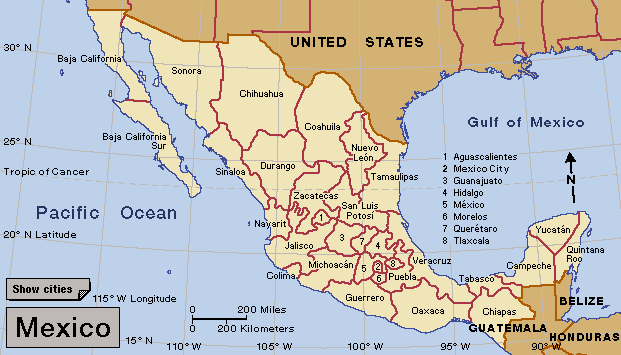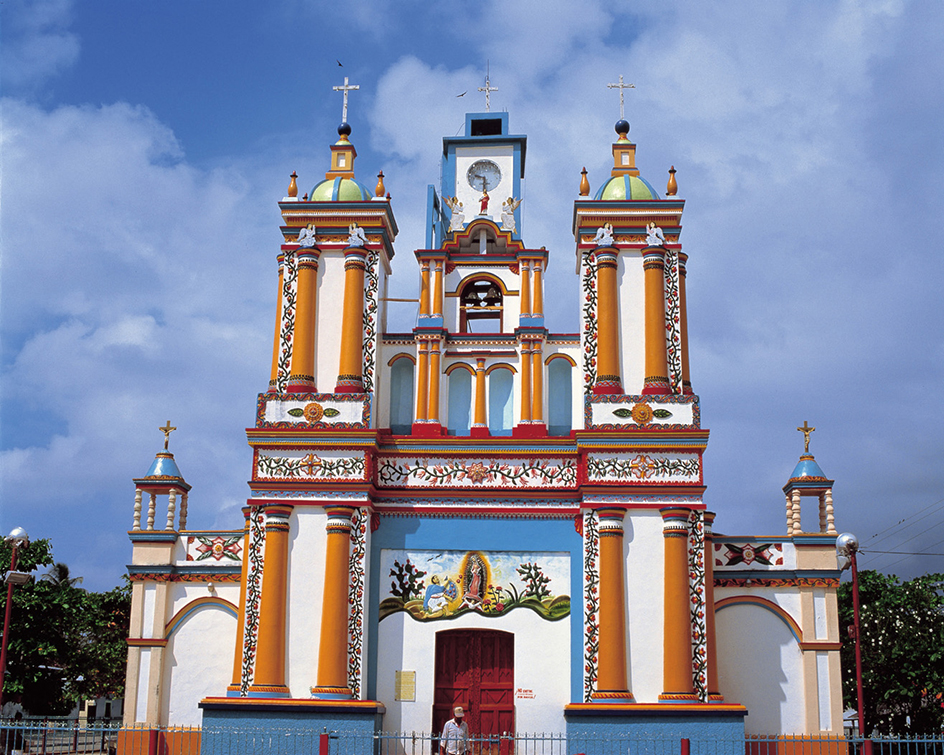Tabasco << tuh BAS koh or tah VAHS koh >> is a state in southeastern Mexico along the Bay of Campeche. It covers 9,756 square miles (25,267 square kilometers). At the time of the 2020 census, it had a population of 2,402,598. Tabasco lies on a low tropical plain. Much of the land is covered by wetlands and supports few people. The Usumacinta River, which flows north through Tabasco, is the largest river in Mexico. The state capital is Villahermosa.

Most of the people of Tabasco live near the Grijalva and Usumacinta rivers. The chief farm products include bananas, cacao, coconuts, and sugar cane. The state’s large forests produce dyes, hardwoods, resins, and rubber. In the late 1900’s, the Mexican government began to drill for petroleum in the Bay of Campeche. Today, Tabasco is a major producer of oil.
The Olmec civilization, which flourished between about 1200 and 400 B.C., left many ruins in northern Tabasco. The Olmec city of La Venta is an important archaeological site. What may be the oldest writing discovered in the Americas, Olmec inscriptions on a cylinder dating from 650 B.C., was found in Tabasco.The Maya, whose civilization reached the peak of its development about A.D. 250, succeeded the Olmec in the region. In 1519, the Spanish explorer Hernán Cortés arrived in what is now Tabasco and founded the town of Santa Maria de la Victoria. Soon after founding the town, Cortés left Tabasco. Pirate attacks forced coastal settlers to move inland in the late 1500’s. The settlers then established Villahermosa on the Grijalva River in the northwestern part of the state. Tabasco became one of Mexico’s original states in 1824.

In October 2007, heavy rains caused major flooding in Tabasco. Authorities estimated that 70 percent of the state was under water and 1 million people had been affected. The flooding, reported to be the worst in 50 years, also ruined many crops and hurt the state’s oil industry.
